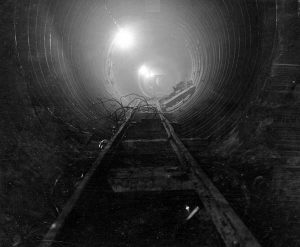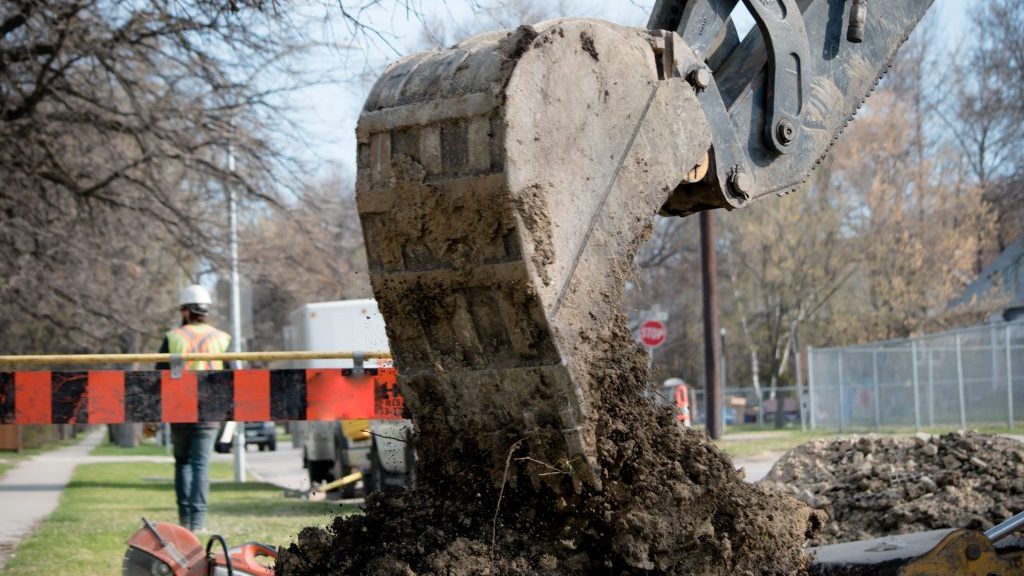With the 60th anniversary of the Hoggs Hollow tunnel disaster approaching, the biggest construction union local in North America will open an $8 million tunnel rescue training centre in Vaughan, Ont.
The tragedy of March 17, 1960 is forever inscribed in construction trade union history. Five Italian-born workers were poisoned by carbon monoxide and drowned while digging a watermain tunnel under the Don River.
Mourned and remembered today, they did not die in vain. Their fate ignited the then-nascent construction trade union movement and brought wholesale changes to labour laws along with a Royal Commission.
Today’s workplace safety laws were born from their deaths and so too, ultimately, was Local 183 of the Labourers’ International Union of North America (LIUNA).
Coincidentally, the local expects to break ground this month (November) on an $8 million tunnel training rescue centre at its property in Vaughan, north of Toronto.
“It’s been a long time planning and working with the city of Vaughan because this kind of thing doesn’t really fit into the building (code) and fire code,” says Sandro Pinto, the training centre’s executive director. “We expect to get shovels in the ground and to open it sometime in late summer 2020.”
LIUNA Local 183 has undertaken tunnel rescue training for 25 years, he says, and this new facility will be a step up from that.
“Right now, we send two people to sites to refresh the designated tunnel rescue people there every month,” Pinto says. “Depending on what projects are ongoing, there are 10 to 12 sites we have to get to.”
With some 700 to 1,000 members designated as tunnel rescue qualified, the team processes between 19,000 and 22,000 seats (people in seats at the course) each year all over Ontario.
The trainers go over procedures and refresh the training much as any type of training though it’s aimed at those who have already achieved their tunnel rescue tickets and are so designated on that job.
The Langstaff Road and Huntington Road facility will house an 8,000-square-foot office space with classrooms and other training facilities and be home to a tunnel simulation.
That tunnel will be accessed via a 33-foot diameter vertical shaft which drops 25 feet to a concrete tunnel extending 100 feet into the property via an open cut.

It will be equipped with air packs and assorted rescue equipment as would any tunnel site. It will also have various ropes and a gantry crane to simulate rescues, Pinto says.
In addition to LIUNA Local 183 members, he says, other groups have expressed interest in using the facility, including fire departments and EMS services.
The construction is being financed wholly by the local with no grants or funding from the province or federal government.
“We’d love to get some money of course, but this is being funded by our members, for our members,” says Pinto.
The construction at Vaughan is the first phase of a plan to move LIUNA 183’s training and head office to that location, he adds.
The perils of working underground are manifest but they are much safer now than they were in the 1960s when Italian immigrants Pasquale Allegrezza, Giovanni Carriglio, Giovanni Fusillo, and brothers Alessandro and Guido Mantella died.
As one of LIUNA 183’s founding forces and later, business manager, John Stefanini notes in his recently published book, More Than We Bargained For: An untold story of exploitation, redemption, and the men who built a worker’s empire (Sutherland House 2019), the deaths were the tipping point.
“Meetings at the Brandon Hall Group (where the construction workers first started to gather on Brandon Avenue) were already crowded with Italian immigrants tired of being exploited and working in despicable conditions,” he writes. “Not long after I arrived and the Brandon Hall Group started gaining traction, an unspeakable tragedy occurred. It would change everything.
“The crew were working at a Hogg’s Hollow watermain tunnel in the Yonge Street and York Mills area. The conditions were cramped and dangerous. They had no helmets, or flashlights. Because they were working under the Don River, there was always the danger of flooding.
“The ground was soft and silt-like so there was always an air compressor running to maintain a positive pressure in the six-foot tunnel and push the water back down. The downside was that all of that air created an oxygen-rich environment and when a cutting torch ignited the rubber insulation on an electrical cable a fire spread quickly and with ferocious intensity. Soon the tunnel filled with toxic smoke.”
As Stefanini notes, the Italian community reacted at first with sorrow “but it quickly turned to rage. Anger at the injustice and poor treatment of workers had been growing for some time and now it spilled over. Every day many immigrant workers risked their lives in horrendous conditions and sometimes all they had to show for it after a month’s work was a worthless piece of paper because the contractor’s cheque had bounced. The terrible tragedy was a call for action and more voices started to shout out.”
Stories in the newspapers pulled no punches. “Hell Hole” blared the Toronto Telegram in massive black type on the front page March 18, 1960. “Slave Immigrants” it raged again in large type on the front, a week later, reflecting that the furious reaction of the public was not abating as the bodies were pulled to the surface. Frank Drea’s reporting noted immigrant workers were “treated like animals” A flurry of stories followed.

“When the coroner’s report noted how safety rules had been brushed aside and that management had ignored the risk to the lives of workers, the clamour for change rose higher,” Stefanini states in his book. “It had come to light that the Hogg’s Hollow tunnel was a disaster in the making. A foreman who voiced safety concerns was fired. Another quit, fearing a collapse because the tunnel was improperly built and there were no fire extinguishers.”
The Ontario Government was forced to act. Then premier Leslie Frost launched the McAndrew Royal Commission on Industrial Safety which found that despite the existence of safety legislation, “accident prevention associations are not functioning…as contemplated by the Act and…are isolated islands of autonomy having no responsibility to report to or even advise the Workmen’s Compensation Board (now known as the Workplace Safety and Insurance Board).”
Immediately things changed, Stefanini notes. “(Brandon Hall leader) Charlie Irvine’s meetings started to fill up with more and more workers who were sick and tired of their working conditions and ready to fight for their rights.






When can I sign up
Why does it take the actions and financial burden of a specific Trade Union( LIUNA Local 183) to initiate this kind of change in safety for the greater good and safety of all construction workers across Canada? Where are all the endless levels of useless and wasteful government bodies in this equation. As usual , they just sit around on their hands, sucking Canadian taxpayers dry with their over the top salaries, bottomless expense accounts waiting for their next big pay day. We need a government that will be more proactive with workers safety instead of reactive after so many deaths in an industry credited with building this great country we all love. We need to get rids of all those free loaders in government starting with Trudeau.